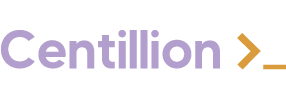Migrating from Google Cloud to SharePoint can be a complex process that requires careful planning and execution. SharePoint provides a robust content management platform, but migrating data from Google Cloud to SharePoint requires a thorough understanding of the data, processes, and tools involved. To ensure a smooth migration, organizations must follow best practices to minimize disruption, ensure data integrity, and reduce the risk of data loss.
Plan the migration: A well-planned migration is the key to success. Start by defining the scope of the migration, identifying the data that needs to be migrated, and determining the timeline for the migration. Plan for contingencies such as unexpected downtime, system failures, and security risks.
Assess the current environment: Before migrating data from Google Cloud, assess the current environment to identify any potential issues that could arise during the migration. This includes analyzing the data structure, evaluating the customizations and configurations, and reviewing the access rights and permissions.
Choose the right tools: Choose the right migration tools that fit the organization’s needs. The tools should have the capability to transfer data accurately, preserve metadata, and handle complex customizations and configurations.
Test the migration: Before starting the migration, test the process to identify any potential issues and resolve them. Test migrations should include both a small-scale migration and a full-scale migration to verify that the process works as expected.
Communicate with stakeholders: Ensure that all stakeholders are aware of the migration process and the timeline. This includes communicating with users about the change and any impact on their work. It’s important to keep stakeholders informed throughout the migration process to ensure a smooth transition.
Monitor the migration: Monitoring the migration process is crucial to ensure that the migration is running smoothly and to identify any issues that may arise. Organizations should monitor the migration process to ensure that data is being transferred accurately and to ensure that the migration process is on track.
Document the migration: Document the migration process, including the tools used, the steps followed, and any issues encountered. This documentation will be useful for future migrations and for resolving any issues that may arise.
In conclusion, migrating from Google Cloud to SharePoint requires careful planning and execution. By following best practices, organizations can ensure a smooth migration, minimize disruption, and reduce the risk of data loss. Organizations should choose the right tools, communicate with stakeholders, monitor the migration process, and document the migration to ensure a successful outcome.






